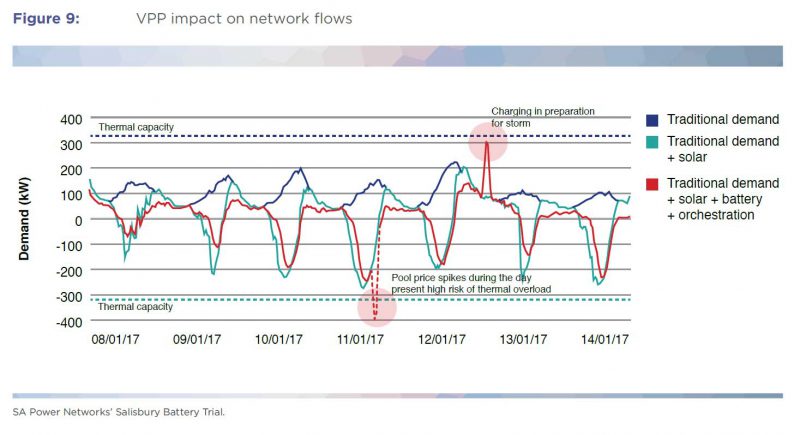As the electricity market transitions from a centralised system to a decentralised one which is characterised by millions of different energy sources, electric vehicles have an important role to play.
At the Renewable Cities Conference in Sydney on Thursday, Sarah Paparo of energy consulting firm Marchment Hill said that while the shift to a distributed energy system including wind, solar, and battery storage presents some opportunities, it also has some challenges to solve.
With around 40 per cent of electricity in Australia expected to come from non-grid scale or distributed sources by 2035, Paparo says this should be able to benefit both business and consumers.
“The decentralisation process can be expected to bring benefits to consumers in terms of managing energy costs and in the longer term to participate in decentralised market,” Paparo said.
Electric vehicles will increasingly also become part of this mix, as mobile batteries on wheels and with capacities that greatly outweigh that of the average home battery.
But with so many unmonitored players – rooftop solar, home batteries and electric cars in particular – on a distributed energy market, it is all too easy for the grid to fall out of safe operational margins.
A battery trial conducted in South Australia on behalf of Open Energy Networks and AEMO and published in 2018 showed that using a “virtual network” created from 100 privately owned batteries both a dramatic trough and peak were experienced.
While the peak, as shown below, was the result of people charging up their batteries in preparation for a storm, the trough was caused by an energy price spike causing batteries to all offload at once to benefit from the financial reward of storing energy.
The implication for EVs of course is that with a greater capacity for storage, they could add to the potential peaks and troughs causing networks to fail.

“The problem with this picture is that the networks can’t see what’s going on, they don’t know what’s happening, they don’t know if these bundles of distributed resources are potentially breaching the safe operating parameters of their networks,” says Paparo.
To better manage distributed resources, Marchment Hill is exploring implementation of a “grid edge platform” to sit between a distributed network and the network operators, creating a distributed energy marketplace to ensure resources don’t exceed the physical limitations of the network.

With a grid edge platform trial already underway in South Australia funded by ARENA and involving 1200 residential batteries, Paparo says amongst the challenges posed by such a system, is how to encourage consumers to participate.
An electric car driver could essentially become the owner of a huge mobile battery, with the ability to help in smoothing the duck curve so characteristic of a grid rich in solar resources.
But would they first be required to register to take advantage of participation in the network, and how encourage that to happen?
Can the platform work effectively if not all participants in the network are not registered?
What would the geographic scope of the markets be, and would those scopes match that of the market operators?
These and other questions are currently being explored via a consultation being conducted by AEMO and Open Energy Networks Australia. Four models are currently being proposed and a recommended model will be published later in 2019.

Bridie Schmidt is associate editor for The Driven, sister site of Renew Economy. She has been writing about electric vehicles since 2018, and has a keen interest in the role that zero-emissions transport has to play in sustainability. She has participated in podcasts such as Download This Show with Marc Fennell and Shirtloads of Science with Karl Kruszelnicki and is co-organiser of the Northern Rivers Electric Vehicle Forum. Bridie also owns a Tesla Model Y and has it available for hire on evee.com.au.


